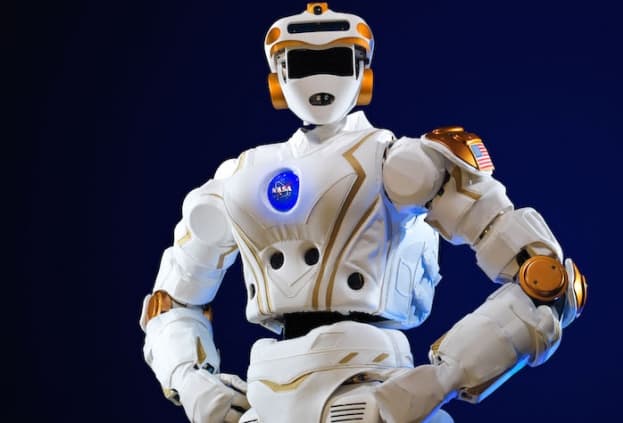NASA Builds Humanoids To Assist Astronauts In Space, Launches Upgraded R5 Robot
National Aeronautics and Space Administration (NASA)’s Langley Research Center in Hampton, Virginia awarded two robot prototypes to MIT and the Northeastern University for further research and development. NASA believes that Humanoids could assist humans in future space explorations. Robots like 1.9 meter tall Valkyrie (R5), the output product of the DARPA Robotics Challenge could be NASA’s trump card for future missions to Mars.
Steve Jurczyk, associate administrator for the Space Technology Mission Directorate (STMD) at NASA’s headquarters in Washington explained that, Human-Robot interaction was a critical aspect of future space explorations, and this prompted NASA to collaborate with the aforementioned selected universities.

The Valkyrie R5 Robot
The two proposals given to NASA from MIT and the Northeastern University, Boston are:
The independent grant awardee universities will serve as critical partners in NASA's upcoming Space Robotics Challenge where two R5 units will compete between themselves in a ‘survival for the fittest’ challenge. The Centennial Challenges Program includes a two step examination where the first one is a virtual competition using Robotic simulations and the next one includes physical competition using the two latest versions of the R5 robot. The results will aid in the making of more effective software’s for dexterous humanoid robots, thereby allowing more autonomy in space programs.
Watch Valkyrie (R5) robot and its cool specs:
Source: #-Link-Snipped-#
Steve Jurczyk, associate administrator for the Space Technology Mission Directorate (STMD) at NASA’s headquarters in Washington explained that, Human-Robot interaction was a critical aspect of future space explorations, and this prompted NASA to collaborate with the aforementioned selected universities.

The Valkyrie R5 Robot
The two proposals given to NASA from MIT and the Northeastern University, Boston are:
- Robust Autonomy for Extreme Space Environments: Hosting the R5 at the Massachusetts Institute of Technology in Cambridge, Massachusetts, led by principal investigator Russ Tedrake
- Accessible Testing on Humanoid-Robot-R5 and Evaluation of NASA Administered (ATHENA) Space Robotics Challenge -- Northeastern University in Boston, Massachusetts, led by principal investigator Taskin Padir
The independent grant awardee universities will serve as critical partners in NASA's upcoming Space Robotics Challenge where two R5 units will compete between themselves in a ‘survival for the fittest’ challenge. The Centennial Challenges Program includes a two step examination where the first one is a virtual competition using Robotic simulations and the next one includes physical competition using the two latest versions of the R5 robot. The results will aid in the making of more effective software’s for dexterous humanoid robots, thereby allowing more autonomy in space programs.
Watch Valkyrie (R5) robot and its cool specs:
Source: #-Link-Snipped-#
0
